Monitoring of Grouting Compactness in a Post-Tensioning Tendon Duct Using Piezoceramic Transducers
Abstract
:1. Introduction
2. Piezoceramic Transducers
2.1. Compressive Mode PZT Transducers
2.2. Smart Aggregates
3. Detection Principles
3.1. Active Sensing Approach
3.2. Wavelet Packet-Based Energy Analysis
4. Experimental Setup and Procedures
4.1. Specimen Fabrication
4.2. Experimental Setup
4.3. Experimental Procedures
5. Test Results and Discussions
5.1. Time Domain Analysis
5.2. Wavelet Packet-Based Energy Analysis
5.3. Discussion
6. Conclusions
Acknowledgments
Author Contributions
Conflicts of Interest
References
- Yang, T.; Yi, W.; Lu, G.; Huang, H.L. Experimental study of nondestructive testing for grouting quality in prestressed concrete T-beam. J. Vib. Eng. 2006, 19, 411–415. [Google Scholar]
- Yamada, M.; Ohtsu, M. Case studies on ungrouted tendon-duct in prestressed concrete models by SIBIE. Constr. Build. Mater. 2010, 24, 2376–2380. [Google Scholar] [CrossRef]
- Yaman, F.; Weiland, T. Inhomogeneity reconstructions in tendon ducts via boundary integral equations. NDT E Int. 2014, 68, 66–72. [Google Scholar]
- Muldoon, R.; Chalker, A.; Forde, M.C.; Ohtsu, M.; Kunisue, F. Indentifying voids in plastic ducts in post-tensioning prestressed concrete members by resonant frenquency of impact-echo, SIBIE and tomography. Constr. Build. Mater. 2007, 21, 527–537. [Google Scholar] [CrossRef]
- Wang, F.; Zhang, F. Experimental research on detection of duct grouting quality of prestressed corrugated pipe with ultrasonic. Bridge Tunn. Constr. Mach. 2015, 2, 73–77. [Google Scholar]
- Krause, M.; Mielentz, F.; Milman, B.; Müller, W.; Schmitz, V.; Wiggenhauser, H. Ultrasonic imaging of concrete members using an array system. NDT E Int. 2001, 34, 403–108. [Google Scholar]
- Schickert, M.; Krause, M.; Müller, W. Ultrasonic imaging of concrete elements using reconstruction by synthetic aperture focusing technique. J. Mater. Civ. Eng. 2003, 15, 235–246. [Google Scholar] [CrossRef]
- Maierhofer, C. Non-destructive evaluation of concrete infrastructure with ground penetrating radar. J. Mater. Civ. Eng. 2003, 15, 287–297. [Google Scholar] [CrossRef]
- Bungey, J.H.; Millard, S.G.; Shaw, M.R. Radar assessment of post-tensioned concrete. In Proceedings of the 7th Internetional Conference on Structural Faults and Repair, Edinburgh, UK, 8 July 1997.
- Yang, Y.; Hu, Y.; Lu, Y. Sensitivity of PZT impedance sensors for damage detection of concrete structures. Sensors 2008, 8, 327–346. [Google Scholar] [CrossRef]
- Xu, B.; Wang, Y.; Dyke, S.J.; Huang, T. Cracking monitoring of RC joints under cyclic loadings based on wavelet packet analysis on embedded PZT measurements. In Proceedings of the 14th ASCE International Conference on Engineering, Science, Construction and Operations in Challenging Environments, St. Louis, MO, USA, 27–29 October 2014.
- Wang, T.; Song, G.; Wang, Z.; Li, Y. Proof-of-concept Study of Monitoring Bolt Connection Status using a Piezoelectric based Active Sensing Method. Smart Mater. Struct. 2013, 22, 087001. [Google Scholar] [CrossRef]
- Sevillano, E.; Sun, R.; Perera, R. Damage Detection Based on Power Dissipation Measured with PZT Sensors through the Combination of Electro-Mechanical Impedances and Guided Waves. Sensors 2016, 16, 639. [Google Scholar] [CrossRef] [PubMed]
- Karayannis, C.G.; Voutetaki, M.E.; Chalioris, C.E.; Providakis, C.P.; Angeli, G.M. Detection of flexural damage stages for RC beams using piezoelectric sensors (PZT). Smart Struct. Syst. 2015, 15, 997–1018. [Google Scholar] [CrossRef]
- Karayannis, C.G.; Chalioris, C.E.; Angeli, G.M.; Papadopoulos, N.A.; Favvata, M.J.; Providakis, C.P. Experimental damage evaluation of reinforced concrete steel bars using piezoelectric sensors. Constr. Build. Mater. 2016, 105, 227–244. [Google Scholar] [CrossRef]
- Voutetaki, M.E.; Papadopoulos, N.A.; Angeli, G.M.; Providakis, C.P. Investigation of a new experimental method for damage assessment of RC beams failing in shear using piezoelectric transducers. Eng. Struct. 2016, 114, 226–240. [Google Scholar] [CrossRef]
- Providakis, C.P.; Stefanaki, K.D.; Voutetaki, M.E.; Tsompanakis, Y.; Stavroulaki, M. Damage detection in concrete structures using a simultaneously activated multi-mode PZT active sensing system: numerical modelling. Struct. Infrastruct. Eng. 2014, 10, 1451–1468. [Google Scholar] [CrossRef]
- Lim, Y.Y.; Kwong, K.Z.; Liew, W.Y.H.; Soh, C.K. Non-destructive concrete strength evaluation using smart piezoelectric transducer–a comparative study. Smart Mater. Struct. 2016, 25, 085021. [Google Scholar] [CrossRef]
- Chalioris, C.E.; Karayannis, C.G.; Angeli, G.M.; Papadopoulo, N.A.; Favvata, M.J.; Providakis, C.P. Applications of smart piezoelectric materials in a wireless admittance monitoring system (WiAMS) to Structures–Tests in RC elements. Case Stud. Constr. Mater. 2016, 5, 1–18. [Google Scholar] [CrossRef]
- Song, G.; Olmi, C.; Gu, H. An overheight vehicle-bridge collision monitoring system using piezoelectric transducer. Smart Mater. Struct. 2007, 16, 462–468. [Google Scholar] [CrossRef]
- Song, G.; Gu, H.; Mo, Y.L.; Hsu, T.; Dhonde, H. Concrete structural health monitoring using embedded piezoceramic transducers. Smart Mater. Struct. 2007, 16, 959–968. [Google Scholar] [CrossRef]
- Song, G.; Gu, H.; Mo, Y.L. Smart aggregate: multi-functional sensors for concrete structures–a tutorial and review. Smart Mater. Struct. 2008, 17, 033001. [Google Scholar] [CrossRef]
- Xu, B.; Li, B.; Song, G. Active debonding detection for large rectangular CFSTs based on wavelet packet energy spectrum with piezoceramics. ASCE J. Struct. Eng. 2013, 139, 1435–1443. [Google Scholar] [CrossRef]
- Xu, B.; Zhang, T.; Song, G.; Gu, H. Active interface debonding detection of a concrete-filled steel tube with PZT techniques using wavelet packet analysis. Mech. Syst. Signal Process. 2013, 36, 7–17. [Google Scholar] [CrossRef]
- Wu, F.; Chang, F.K. Debond detection using embedded piezoelectric elements in reinforced concrete structure–part I: Experiment. Struct. Health Monit. 2006, 5, 5–15. [Google Scholar] [CrossRef]
- Wu, F.; Chang, F.K. Debond detection using embedded piezoelectric elements in reinforced concrete structure–part II: Analysis and Algorithm. Struct. Health Monit. 2006, 5, 17–28. [Google Scholar] [CrossRef]
- Qin, F.; Kong, Q.; Li, M.; Mo, Y.; Song, G. Bond slip detection of steel plate and concrete beams using smart aggregates. Smart Mater. Struct. 2015, 24, 1–13. [Google Scholar] [CrossRef]
- Chalioris, C.E.; Papadopoulos, N.A.; Angeli, G.M.; Karayannis, C.G.; Liolios, A.A.; Providakis, C.P. Damage evaluation in shear-critical reinforced concrete beam using piezoelectric transducers as smart aggregates. Open Eng. 2015, 1, 373–384. [Google Scholar] [CrossRef]
- Gu, H.; Song, G.; Dhonde, H.; Mo, Y.L.; Yan, S. Concrete early-age strength monitoring using embedded piezoelectric transducers. Smart Mater. Struct. 2006, 15, 1837–1845. [Google Scholar] [CrossRef]
- Du, G.; Kong, Q.; Lai, T.; Song, G. Feasibility Study on Crack Detection of Pipelines Using Piezoceramic Transducers. Int. J. Distrib. Sens. Netw. 2013, 2013, 631715. [Google Scholar] [CrossRef]
- Kong, Q.; Wang, R.; Song, G.; Yang, Z.; Still, B. Monitoring the Soil Freeze-Thaw Process Using Piezoceramic-Based Smart Aggregate. J. Cold Reg. Eng. 2014, 28, 06014001. [Google Scholar] [CrossRef]
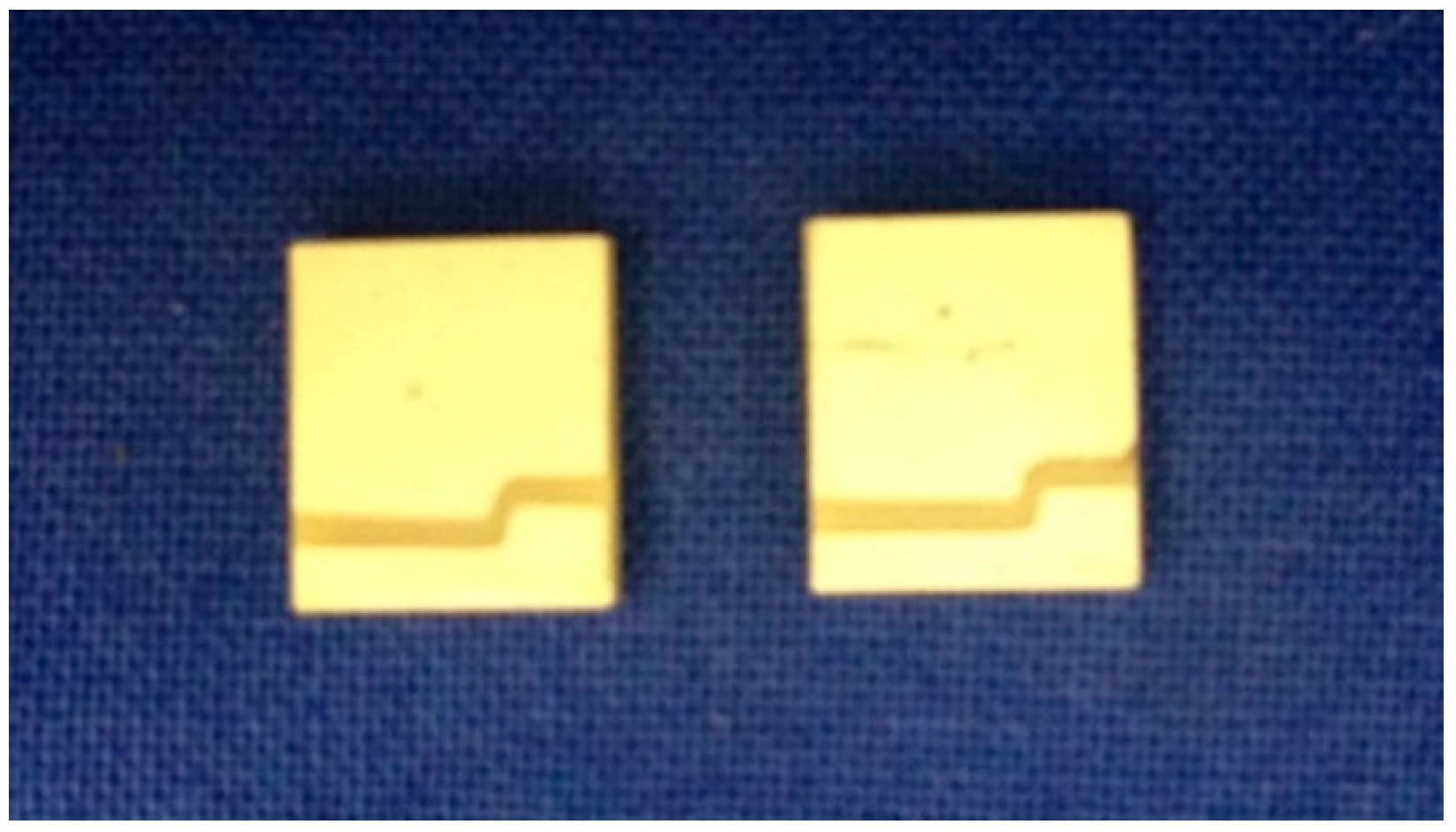
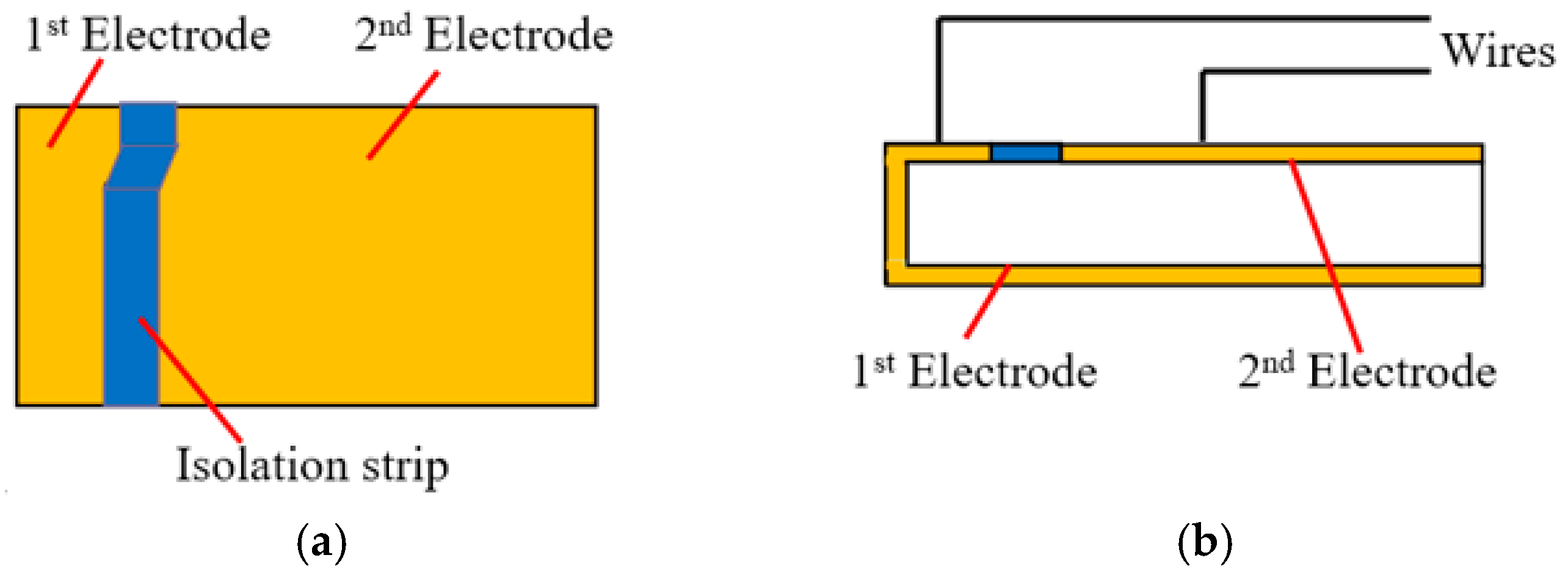


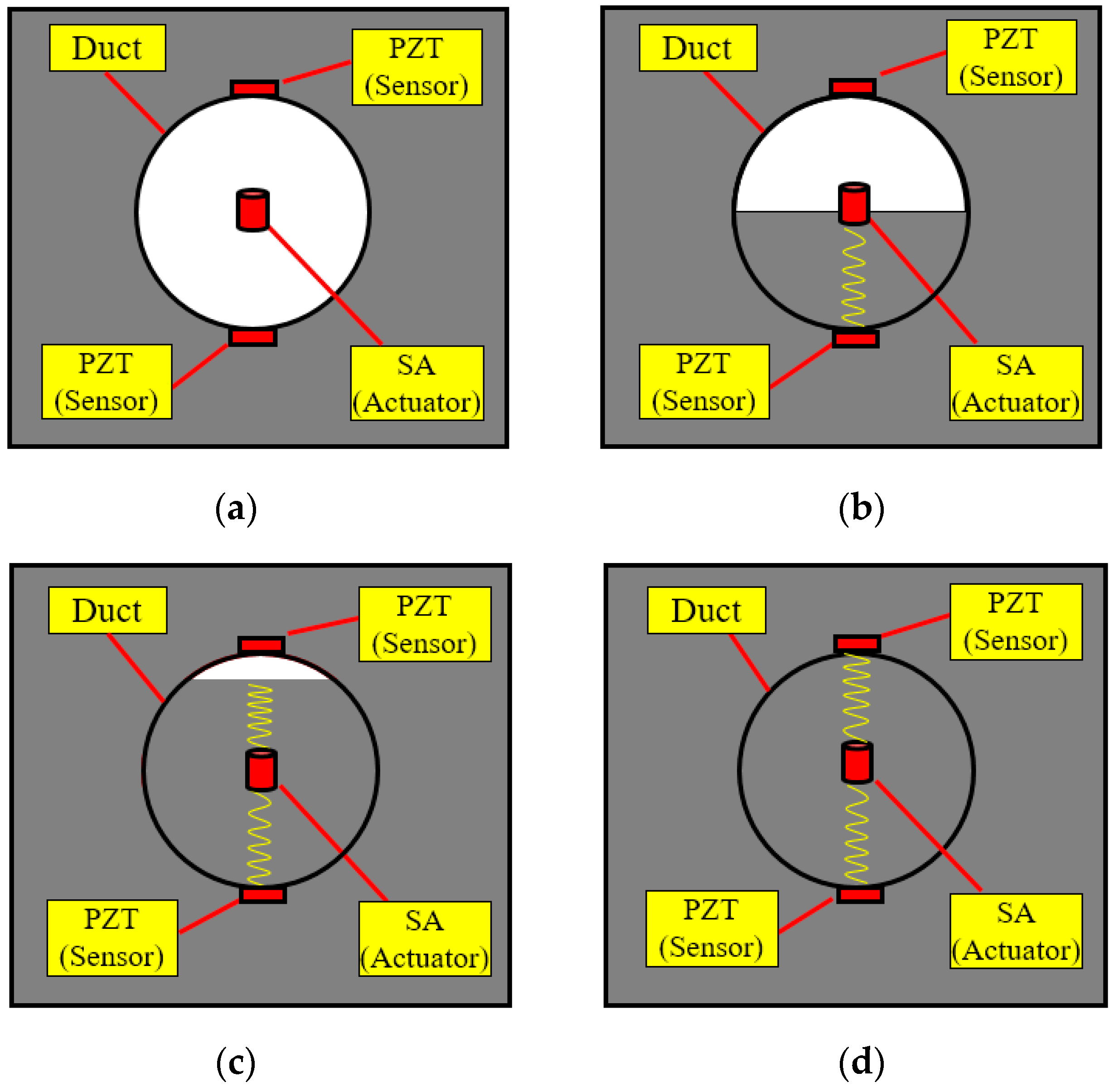
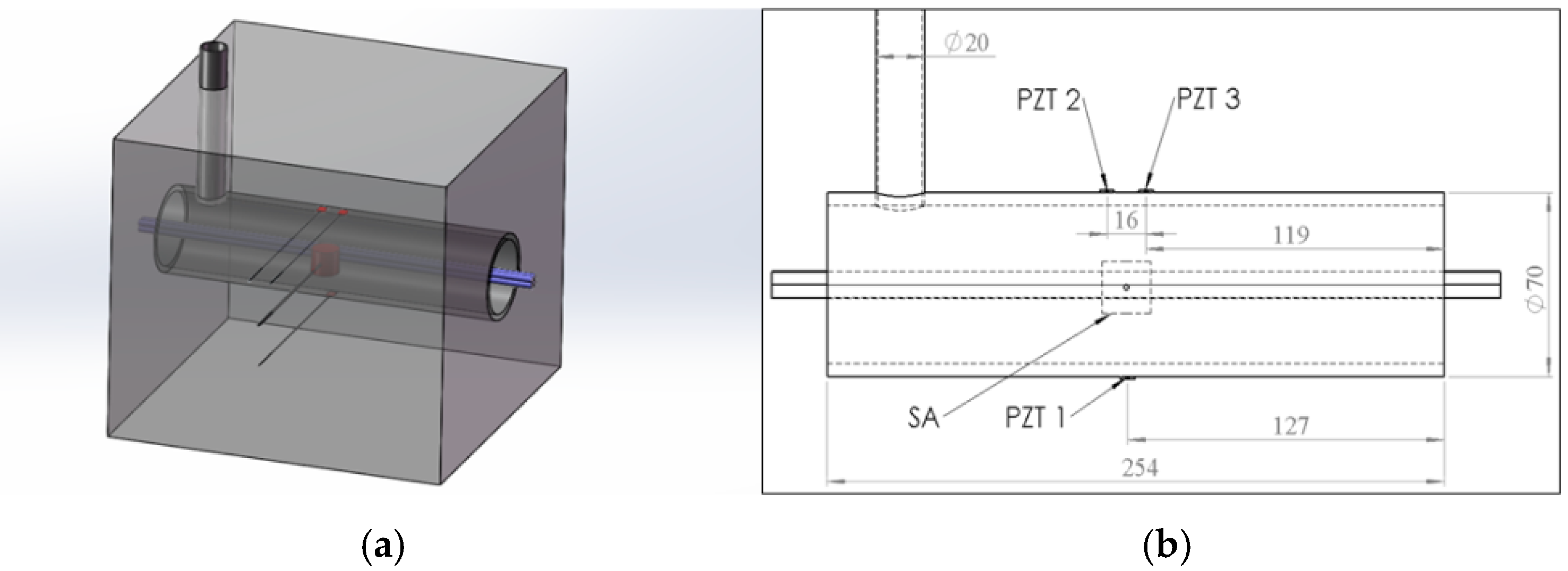
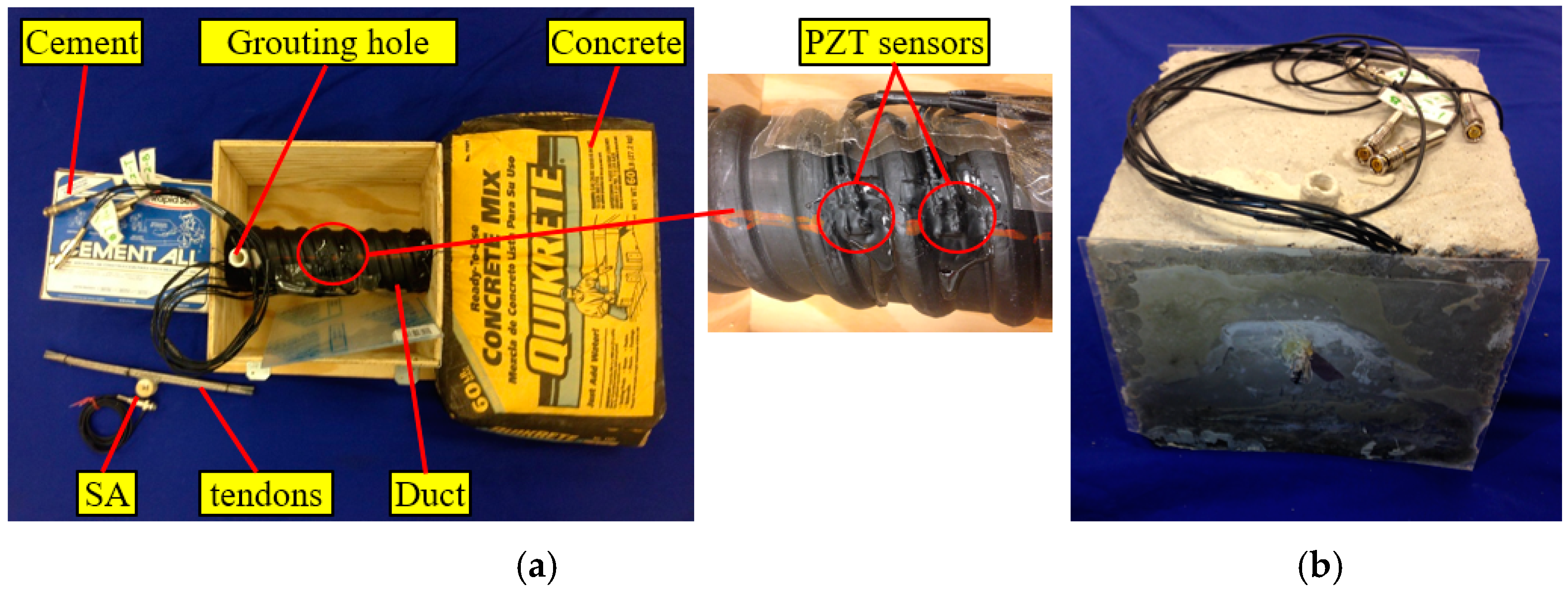
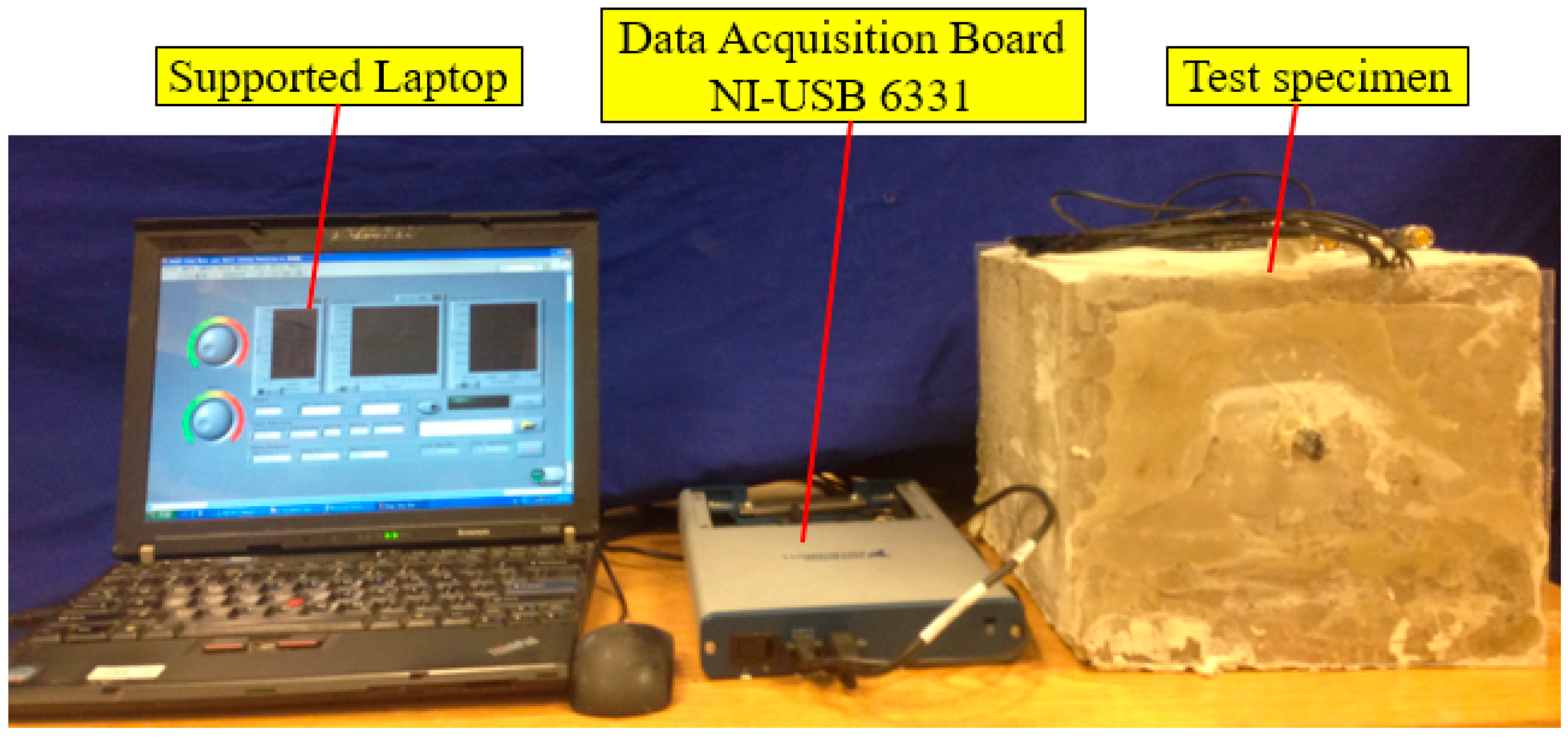
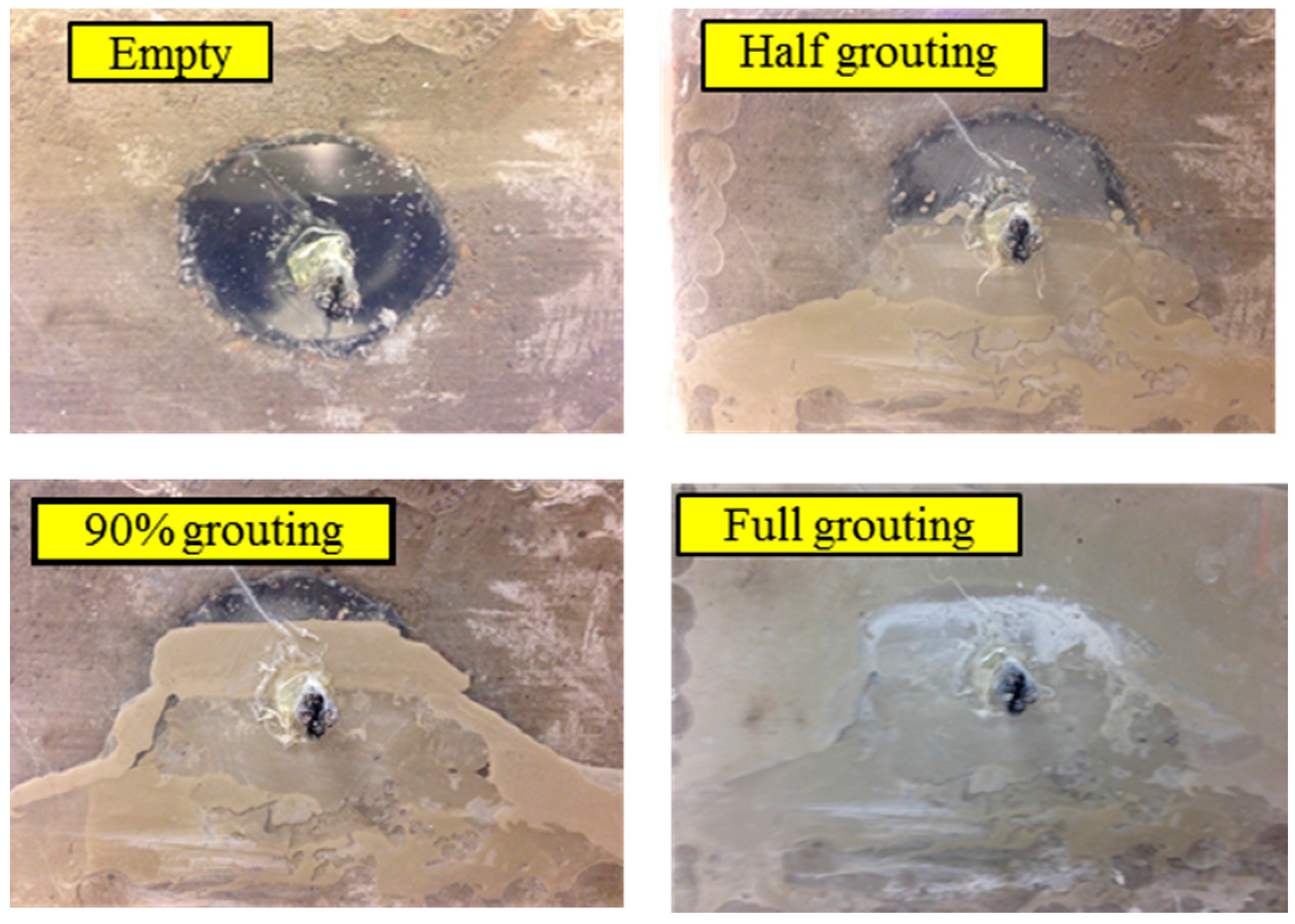

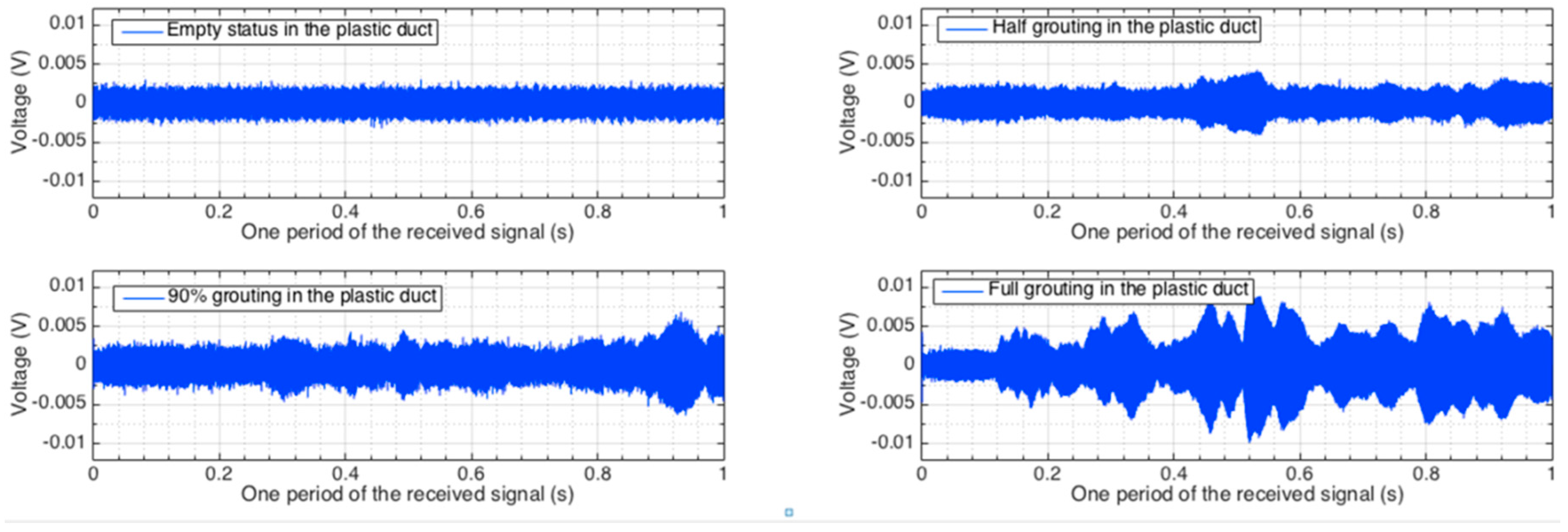
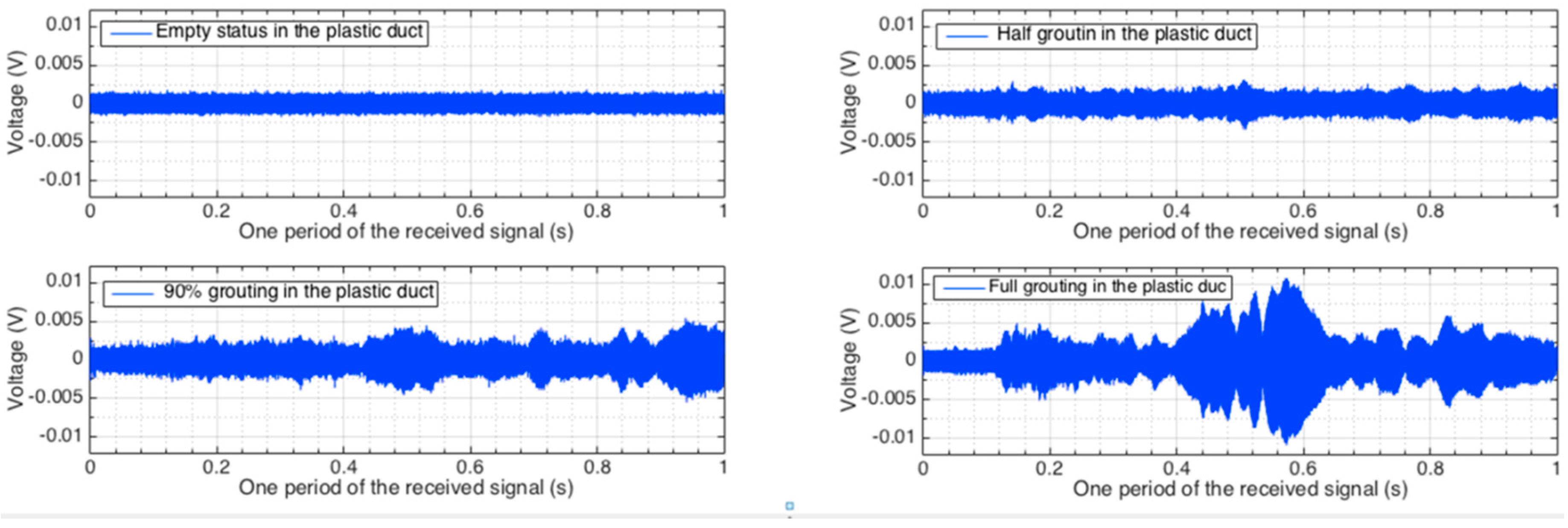
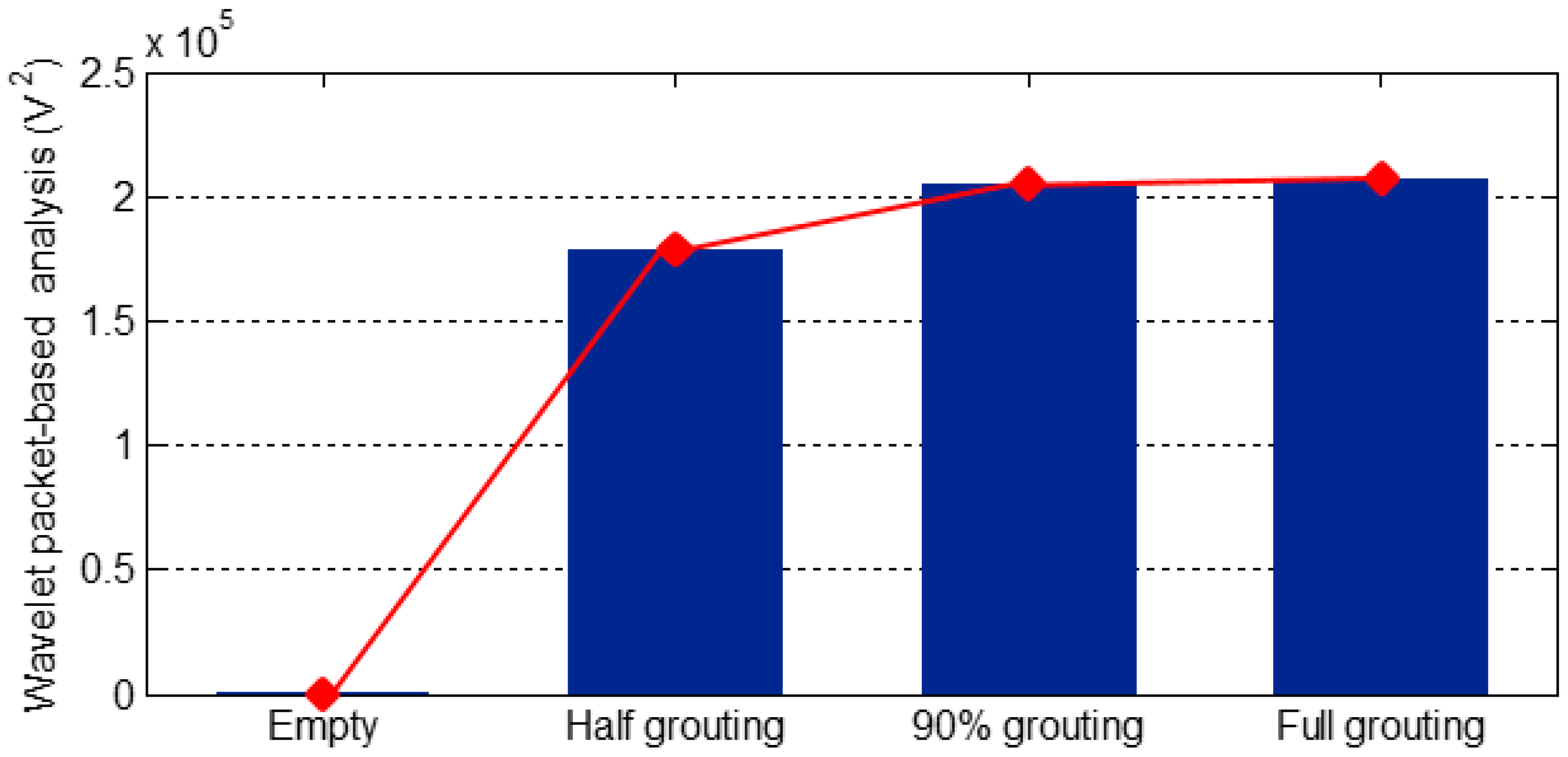
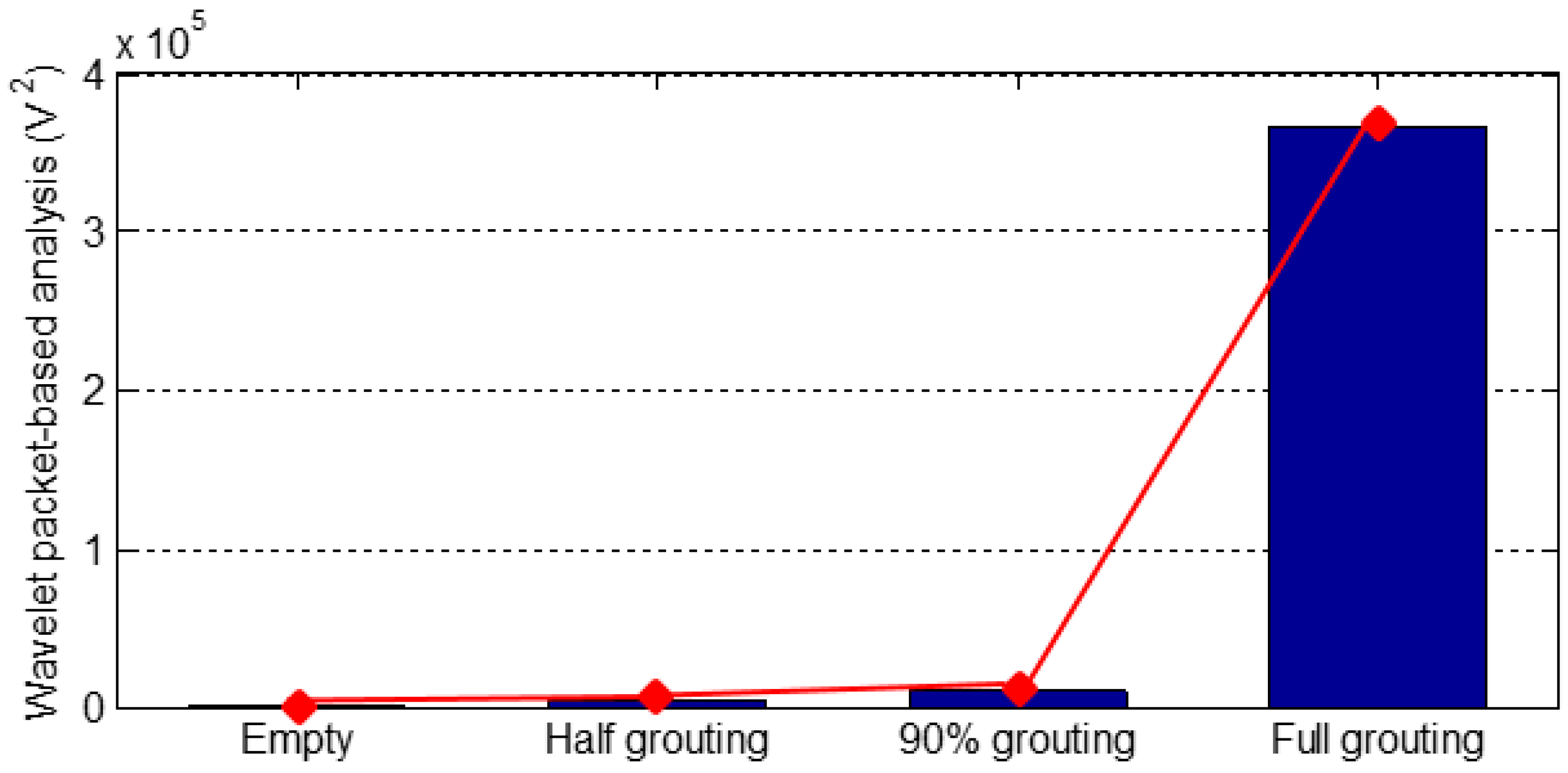
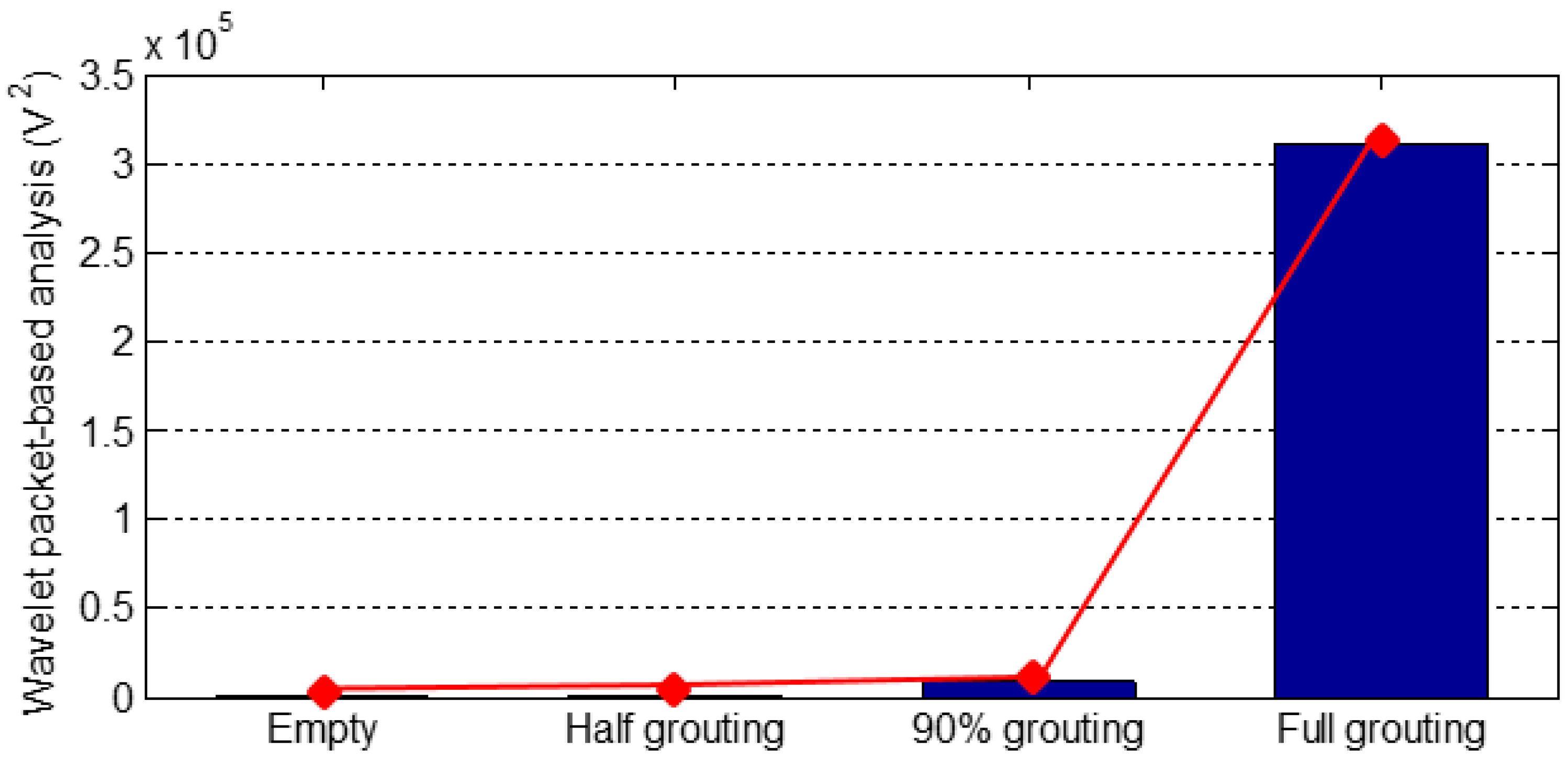
© 2016 by the authors; licensee MDPI, Basel, Switzerland. This article is an open access article distributed under the terms and conditions of the Creative Commons Attribution (CC-BY) license (http://creativecommons.org/licenses/by/4.0/).
Share and Cite
Jiang, T.; Kong, Q.; Wang, W.; Huo, L.; Song, G. Monitoring of Grouting Compactness in a Post-Tensioning Tendon Duct Using Piezoceramic Transducers. Sensors 2016, 16, 1343. https://doi.org/10.3390/s16081343
Jiang T, Kong Q, Wang W, Huo L, Song G. Monitoring of Grouting Compactness in a Post-Tensioning Tendon Duct Using Piezoceramic Transducers. Sensors. 2016; 16(8):1343. https://doi.org/10.3390/s16081343
Chicago/Turabian StyleJiang, Tianyong, Qingzhao Kong, Wenxi Wang, Linsheng Huo, and Gangbing Song. 2016. "Monitoring of Grouting Compactness in a Post-Tensioning Tendon Duct Using Piezoceramic Transducers" Sensors 16, no. 8: 1343. https://doi.org/10.3390/s16081343
APA StyleJiang, T., Kong, Q., Wang, W., Huo, L., & Song, G. (2016). Monitoring of Grouting Compactness in a Post-Tensioning Tendon Duct Using Piezoceramic Transducers. Sensors, 16(8), 1343. https://doi.org/10.3390/s16081343







